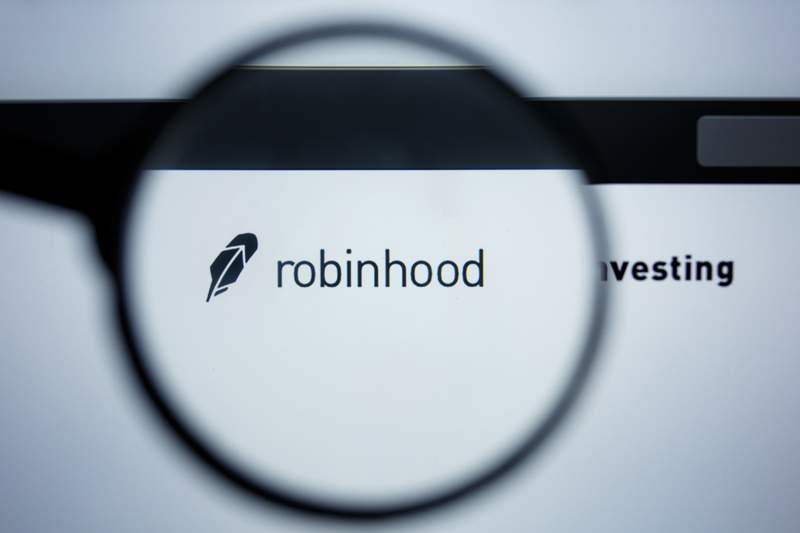Procore signs multi-year strategic collaboration agreement with AWS
Introduction & Market Context
Robinhood Markets , Inc. (NASDAQ:HOOD) released its first quarter 2025 earnings presentation on April 30, highlighting substantial growth across key metrics despite some sequential declines in financial performance. The trading platform continues to expand its customer base, product offerings, and international presence while maintaining strong profitability.
The company’s stock closed at $49.37 on April 30, 2025, but dipped slightly in after-hours trading following the release, down 1.08% to $48.58. This modest pullback came despite the company’s strong year-over-year performance, possibly reflecting investor reaction to sequential declines in some financial metrics.
Quarterly Performance Highlights
Robinhood reported significant growth in its customer base and assets under custody. Funded Customers increased to 25.8 million, representing year-over-year growth of 1.9 million and sequential growth of 620,000 users.
As shown in the following chart of funded customer growth:
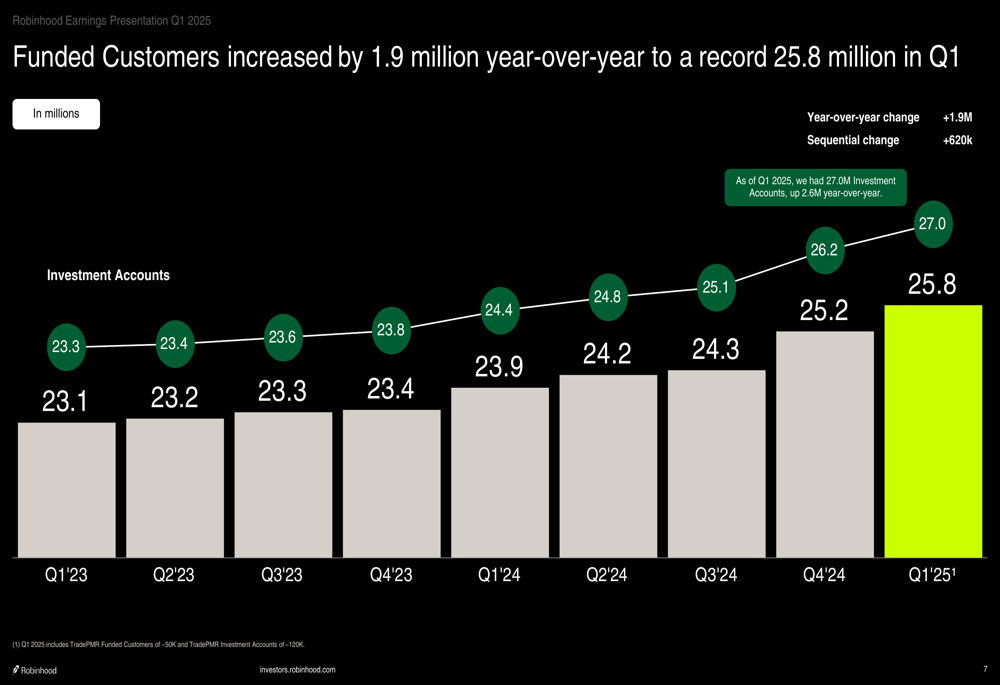
Total (EPA:TTEF) Platform Assets surged to $221 billion, a remarkable 70% increase year-over-year and a 14% rise sequentially. This growth was primarily driven by continued net deposits and the acquisition of TradePMR, which closed in February 2025.
The company’s asset composition and growth trajectory are illustrated in this chart:
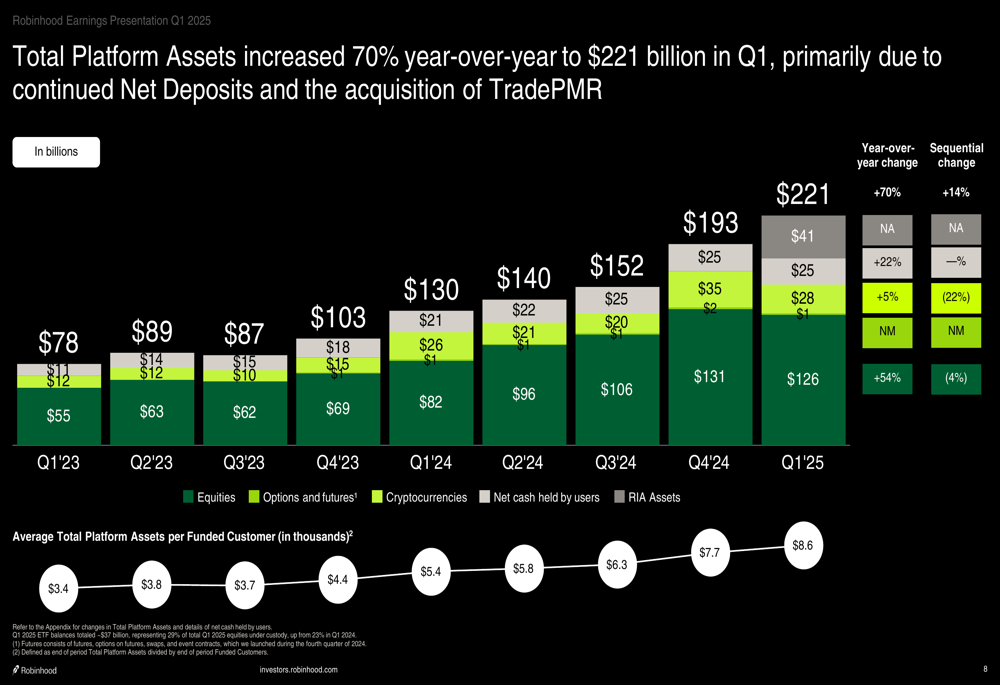
Robinhood’s premium subscription service, Robinhood Gold, continued its strong momentum, reaching 3.19 million subscribers. This represents year-over-year growth of 1.5 million and sequential growth of 550,000 subscribers, with a Gold adoption rate of 12.4% among funded customers.
The value proposition of Robinhood Gold is highlighted in this overview:
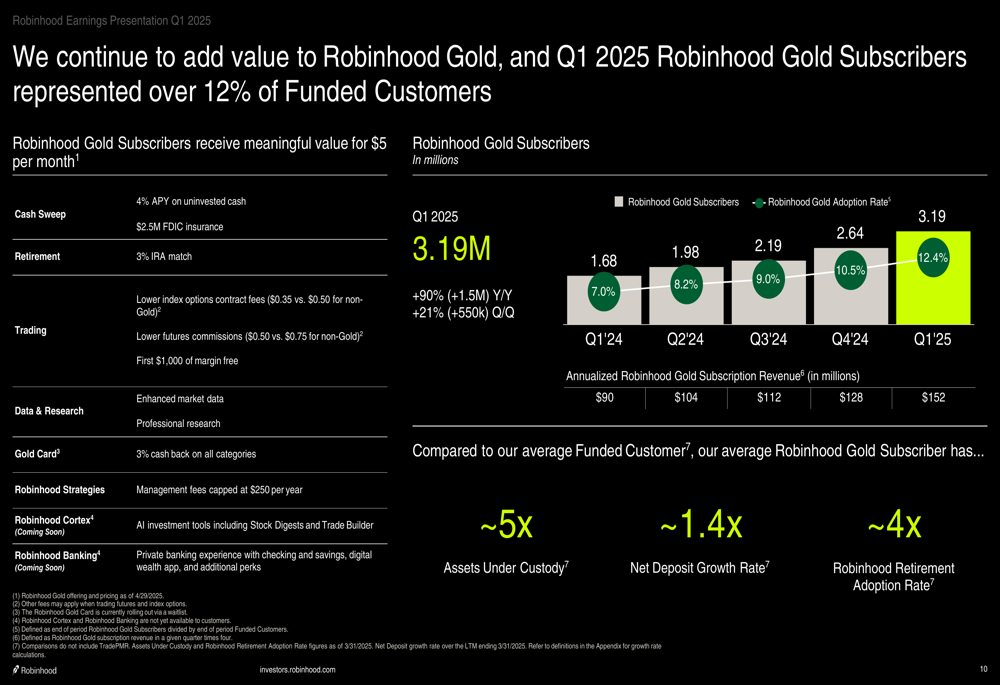
Perhaps most impressively, Net Deposits reached a record $18.0 billion in Q1, with last twelve months (LTM) deposits of $57 billion representing 44% LTM growth. The annualized growth rate stands at 37%.
The following chart illustrates the company’s accelerating deposit growth:
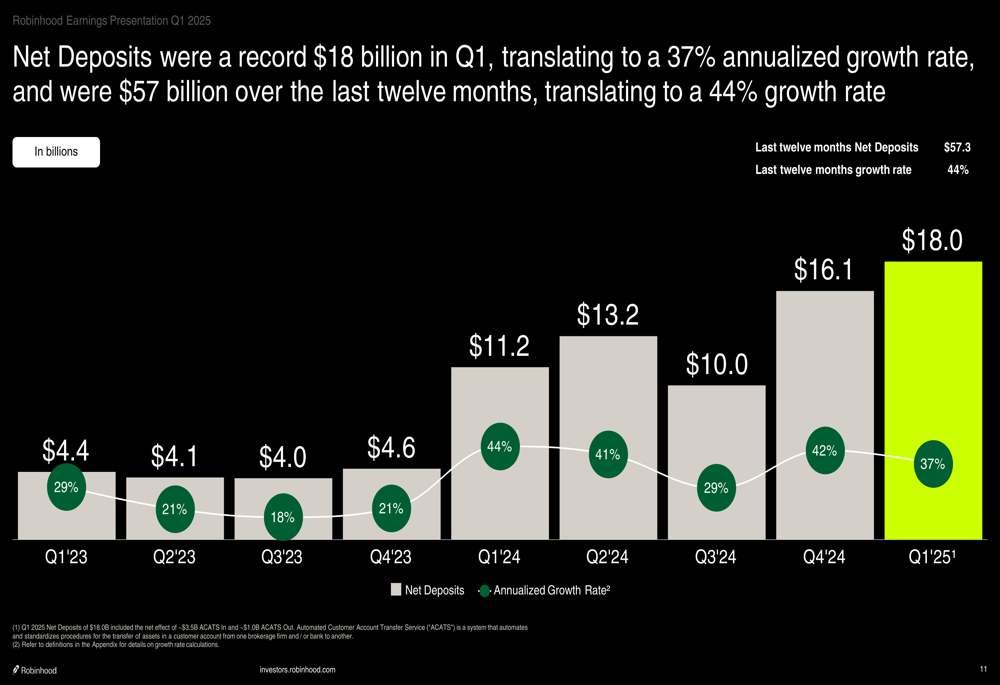
Detailed Financial Analysis
Robinhood’s financial performance showed strong year-over-year improvement, though with some sequential declines. Total Net Revenues reached $927 million, up 50% year-over-year but down 9% sequentially. Transaction-based revenues were particularly strong, up 77% year-over-year to $583 million.
The breakdown of transaction-based revenue by asset class is shown here:
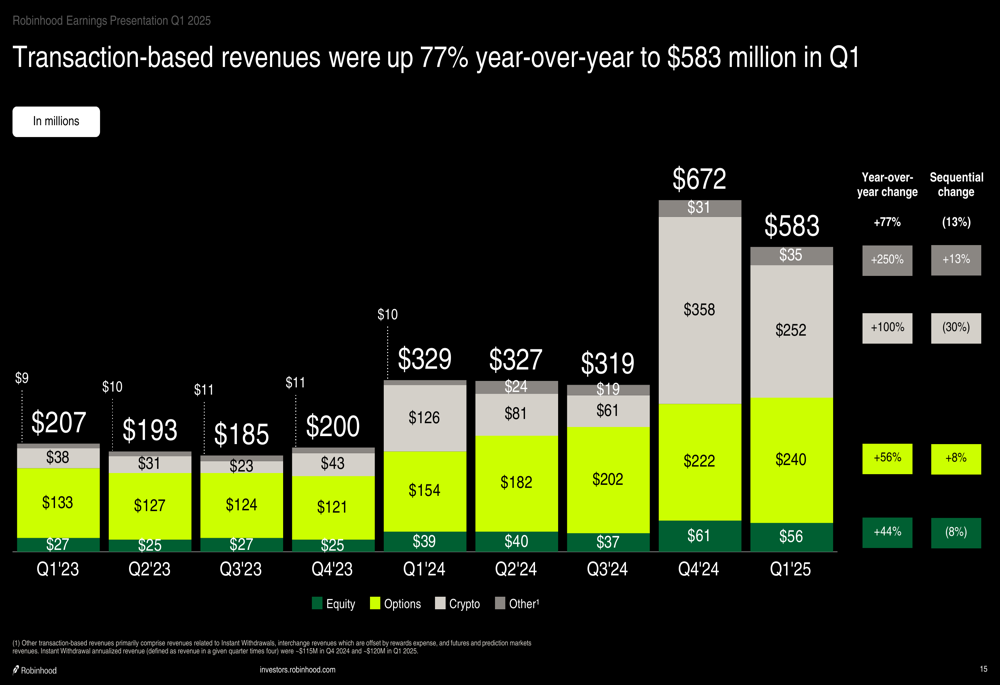
Net Income increased to $336 million, representing a $179 million improvement year-over-year, though down $580 million sequentially. The company noted that Q4 2024 figures included tax benefits and regulatory accrual reversals that did not recur in Q1 2025.
Diluted Earnings Per Share (EPS) reached $0.37, up $0.19 year-over-year but down $0.64 sequentially. Adjusted EBITDA grew 90% year-over-year to $470 million, with an impressive 51% margin, though it decreased 23% sequentially.
The company’s GAAP net income and EPS trajectory is illustrated in this chart:
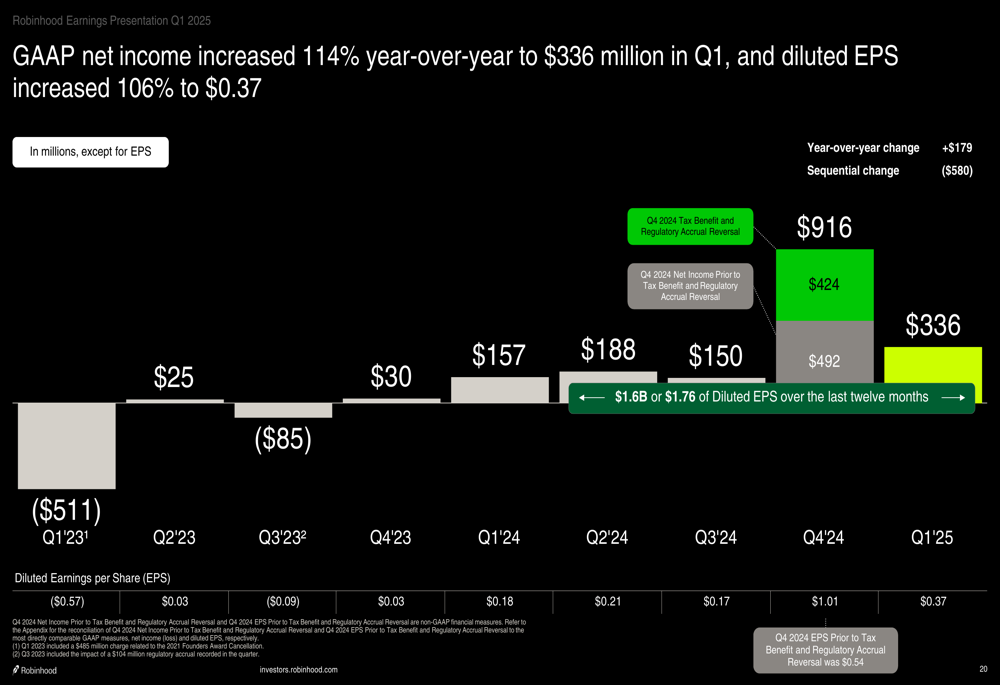
Robinhood’s adjusted EBITDA and margin performance is shown here:
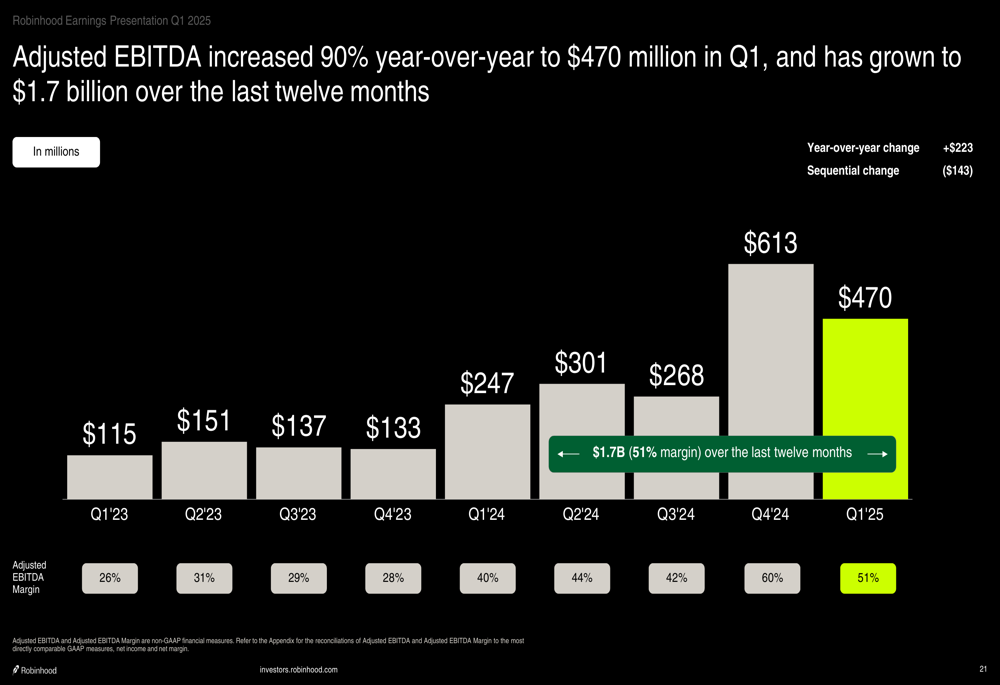
The company continues to maintain a strong balance sheet with over $4.5 billion in corporate cash, investments, and stablecoin, as well as $3.7 billion in available lines of credit. Robinhood also expanded its share repurchase program from $1 billion to $1.5 billion, returning $322 million to shareholders by repurchasing approximately 7 million shares in Q1.
The following chart details the company’s share repurchase activity:
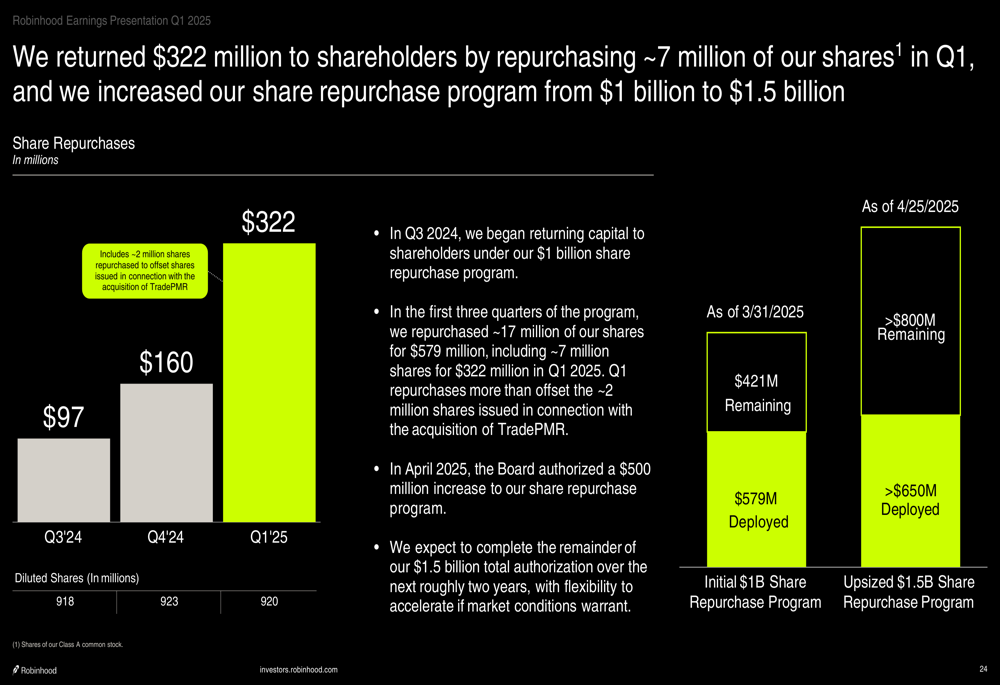
Strategic Initiatives
Robinhood outlined three strategic pillars for 2025: Active Traders, Wallet Share for Next (LON:NXT) Generation, and Global Financial Ecosystem.
For Active Traders, the company is enhancing Robinhood Legend (its desktop platform), rolling out futures trading, expanding its prediction markets hub, and launching Robinhood Cortex. These initiatives aim to increase Robinhood’s market share across equities, options, crypto, and margin trading.
The Wallet Share strategy focuses on expanding Robinhood Gold Card offerings, rolling out Robinhood Strategies, integrating TradePMR (acquired in Q1 2025), and launching Robinhood Banking. The company’s retirement accounts have shown strong growth, with Assets Under Custody reaching $14.4 billion in Q1 2025, up from $4.2 billion a year earlier.
For its Global Financial Ecosystem, Robinhood is expanding its crypto selection and capabilities, pursuing geographic expansion and vertical integration (including the Bitstamp acquisition), exploring tokenization, and expanding brokerage services in the UK with plans to launch in APAC and three additional markets.
The company’s product development velocity in Q1 2025 is illustrated in this timeline:
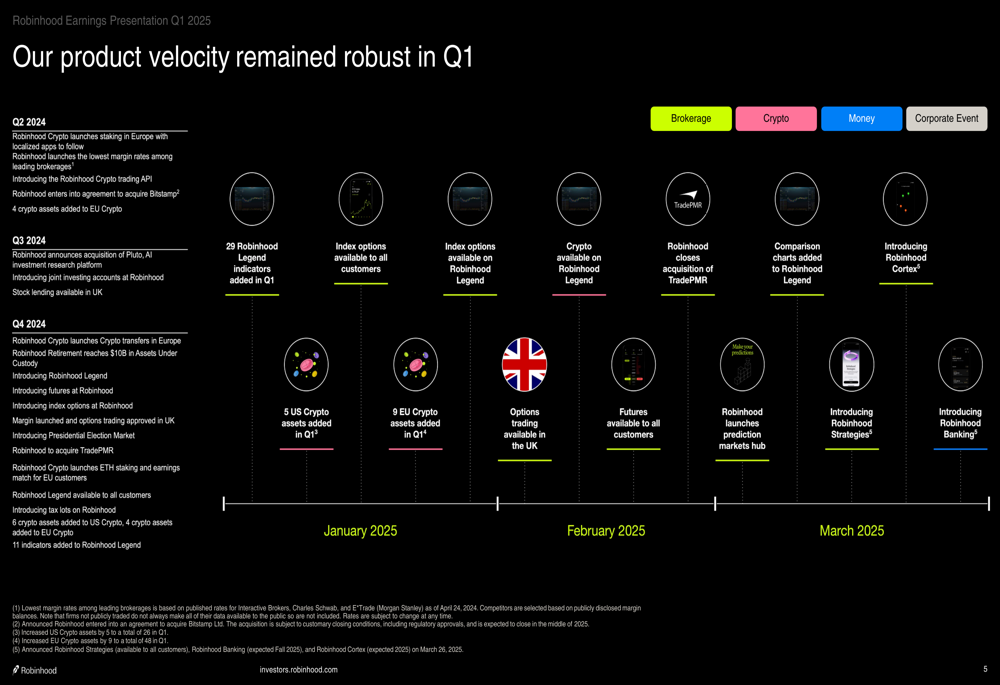
Forward-Looking Statements
Robinhood updated its 2025 outlook for Adjusted Operating Expenses and Share-Based Compensation, increasing the range from $2.0-2.1 billion to $2.085-2.185 billion to account for the TradePMR acquisition. This represents up to a 10% increase at the midpoint.
The company’s "Rule of 40" performance (year-over-year revenue growth plus adjusted EBITDA margin) reached an impressive 111% for the last twelve months ending Q1 2025, up from 69% a year earlier, demonstrating Robinhood’s ability to balance growth and profitability.
Looking ahead, Robinhood’s strategic roadmap for 2025 focuses on expanding its product offerings, increasing market share across asset classes, and growing its international presence:

The company’s strong performance in Q1 2025 builds on the momentum reported in its Q3 2024 earnings, where it highlighted record net deposits and customer assets, alongside significant revenue increases. The introduction of new trading products and expansion of the Robinhood Gold program continue to drive growth, with the company maintaining its optimistic outlook for the future.
Full presentation:
This article was generated with the support of AI and reviewed by an editor. For more information see our T&C.
